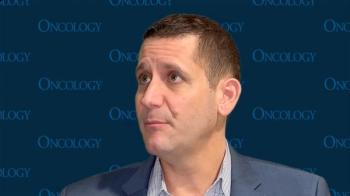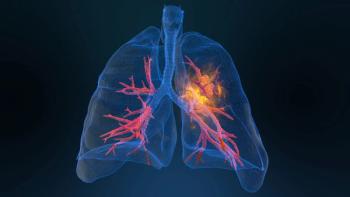
- Oncology Vol 29 No 4_Suppl_1
- Volume 29
- Issue 4_Suppl_1
(P052) Human Papillomavirus in Esophageal Cancer: An Institutional Retrospective Analysis
There was no HPV oncogene expression in our patient cohort, which corresponds with a low-to-no prevalence of esophageal HPV infection in a population of patients in the United States. However, further studies including a larger patient cohort with pretreatment tissue analysis would still be helpful in determining the true prevalence of HPV in esophageal cancer. Patients who are treated with trimodality therapy experienced a high rate of pathologic response.
Sarah E. James, MD, PhD, Terence T. Sio, MD, Rondell P. Graham, MBBS, Michael Keeney, MD, David I. Smith, PhD, Robert C. Miller, MD; Department of Radiation Oncology, Department of Laboratory Medicine and Pathology, Mayo Clinic, Rochester; Department of Radiation Oncology, Mayo Clinic, Jacksonville
OBJECTIVES: Human papillomavirus (HPV) is a well-established oncogenic and prognostic factor in a number of cancers. This retrospective study aims to estimate the prevalence of HPV in esophageal cancer and investigate the potential effect of infection on treatment response.
MATERIALS AND METHODS: Esophagectomy tissue samples were obtained for 94 stage II/III esophageal cancer patients treated with trimodality therapy at our institution between 1998 and 2003. Patients with both adenocarcinoma and squamous cell histology were included. Most patients were treated with 50.4 Gy in 28 fractions with concurrent chemotherapy. Chemotherapy consisted of a platinum doublet of either cisplatin with 5-fluorouracil (5-FU) or carboplatin with paclitaxel. Subsequent to the neoadjuvant therapy course, patients underwent Ivor-Lewis esophagectomy. Fresh-frozen paraffin-embedded specimens were evaluated using quantitative polymerase chain reaction (qPCR) to measure expression of the HPV oncogenes E6 and E7 and human p16. Patient characteristics were obtained from a chart review of electronic medical records. Hematoxylin and eosin (H&E)-stained slides of fresh-frozen paraffin-embedded esophageal tumor specimens that were taken at the time of surgery were carefully reviewed and graded for treatment response. Chi-square testing was used for multivariate analysis.
RESULTS: None of the 94 samples was positive for HPV oncogene expression. Median age at time of diagnosis was 61 years. The majority of patients was male (87%). Patients had advanced disease, with most having T3N0 (13%) or T3N1 (57%) disease. A total of 89% of patients had adenocarcinoma, and 11% had squamous cell carcinoma. At the time of esophagectomy, 28 (30%) patients were found to have a complete pathologic response (pCR), 40 (43%) had a partial response, and 26 (28%) had no significant treatment response. There was no significant correlation found between pCR and age, T stage, N stage, histology, tumor location, grade, or gender. However, patients aged > 70 years were more likely to have a pCR when compared with younger counterparts (P = .07).
CONCLUSIONS: There was no HPV oncogene expression in our patient cohort, which corresponds with a low-to-no prevalence of esophageal HPV infection in a population of patients in the United States. However, further studies including a larger patient cohort with pretreatment tissue analysis would still be helpful in determining the true prevalence of HPV in esophageal cancer. Patients who are treated with trimodality therapy experienced a high rate of pathologic response.
Proceedings of the 97th Annual Meeting of the American Radium Society-
Articles in this issue
Newsletter
Stay up to date on recent advances in the multidisciplinary approach to cancer.
















































































